Georgia Tech astronaut Shane Kimbrough tours labs, meets with students after third mission to space
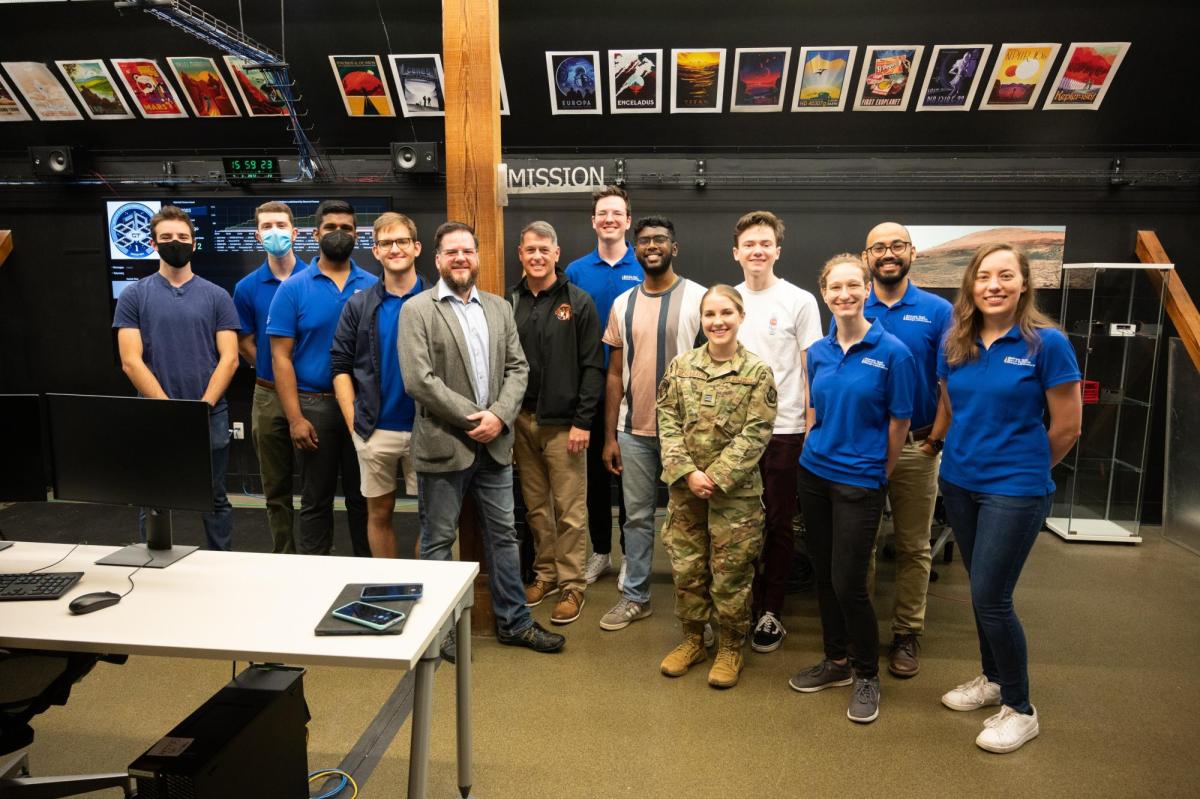
Astronaut Shane Kimbrough visits the Space Systems Design Lab at Georgia Tech
(text and background only visible when logged in)
Two standing-room-only crowds welcomed Shane Kimbrough back to his alma mater on March 4, four months after he returned from space.
The first was an afternoon question-and-answer session with the Georgia Tech community. Then he went under the lights at a sold-out Russ Chandler Stadium as the Yellow Jackets baseball team hosted the University of Georgia.
The day of events marked Kimbrough’s first on campus since the Georgia Tech graduate’s third mission to space — which included 199 days and 84 million miles aboard the International Space Station (ISS).
Kimbrough’s first stop of the day was a morning tour of the Space Systems Design Lab. Nearly two dozen students and research engineers showed Kimbrough the lab space of Glenn Lightsey, a professor in the Daniel Guggenheim School of Aerospace Engineering (AE School).
Kimbrough watched as the group tested electronics and navigation systems for future CubeSats. Their GT-1 spacecraft was deployed into orbit in February, and the students are currently working on three 10 cm x 10 cm x 10 cm follow-up models for future missions.
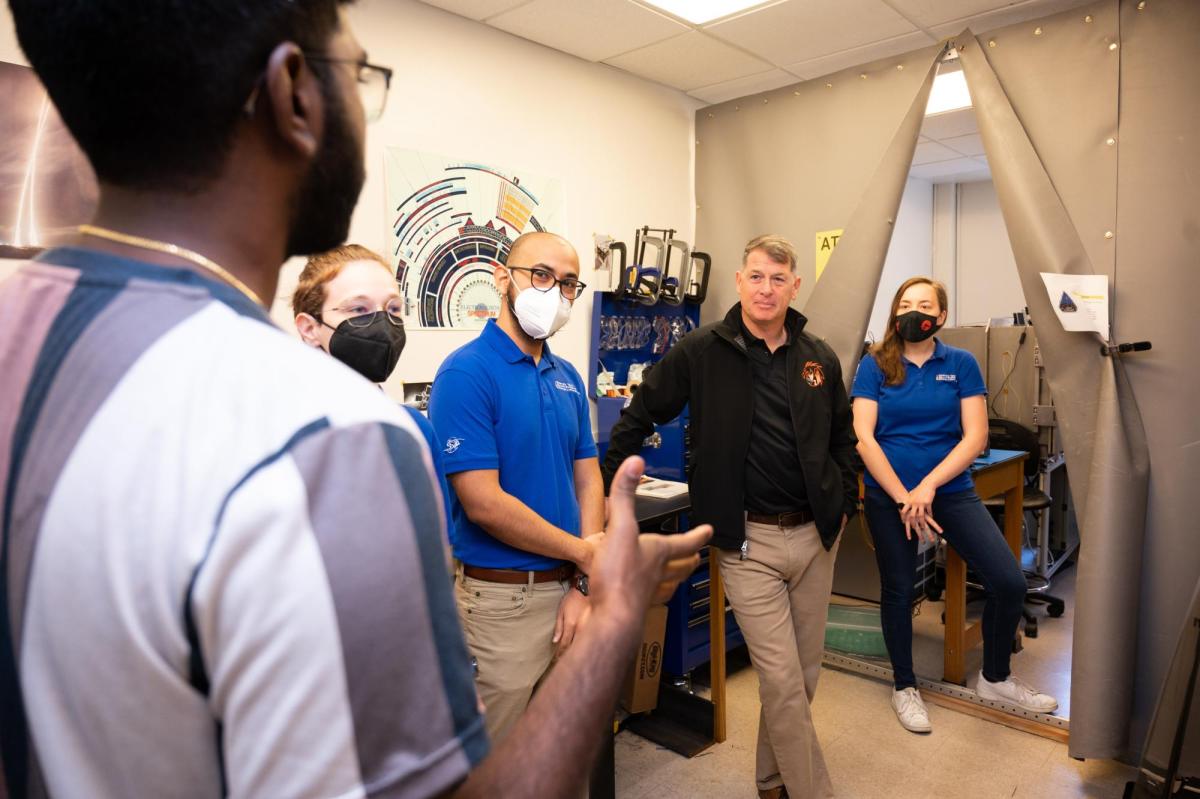
Kimbrough listens to master's student Ebenezer Arunkumar during his March 4 visit.
From there, Kimbrough visited Mission Operations Center, which is currently being used to track GT-1. He also checked in on Lunar Flashlight, which is scheduled for launch this summer and will be the first CubeSat ever to orbit the moon. A Georgia Tech interdisciplinary team built the spacecraft’s propulsion system. The AE School and the Georgia Tech Research Institute (GTRI) have been assembling and integrating Lunar Flashlight for NASA’s Jet Propulsion Lab the last several months.
“I was really inspired by the students I met, and I’ve been very impressed by the projects they’re working on,” said Kimbrough, who received his master’s degree in operations research from the H. Milton Stewart School of Industrial and Systems Engineering (ISyE) in 1998. “So many people are interested in space, which is great to see.”
“Friday was amazing! It was very cool to share the work we do here at the lab and hear about his various experiences, from the military to NASA to being on the ISS,” said Ebenezer Arunkumar, GT-1’s software team lead and a master’s student in aerospace engineering. “Being an astronaut has always been a dream of mine, so meeting someone who has accomplished that goal was awe-inspiring.”
“I was really inspired by the students I met, and I’ve been very impressed by the projects they’re working on. So many people are interested in space, which is great to see.”
Shane Kimbrough
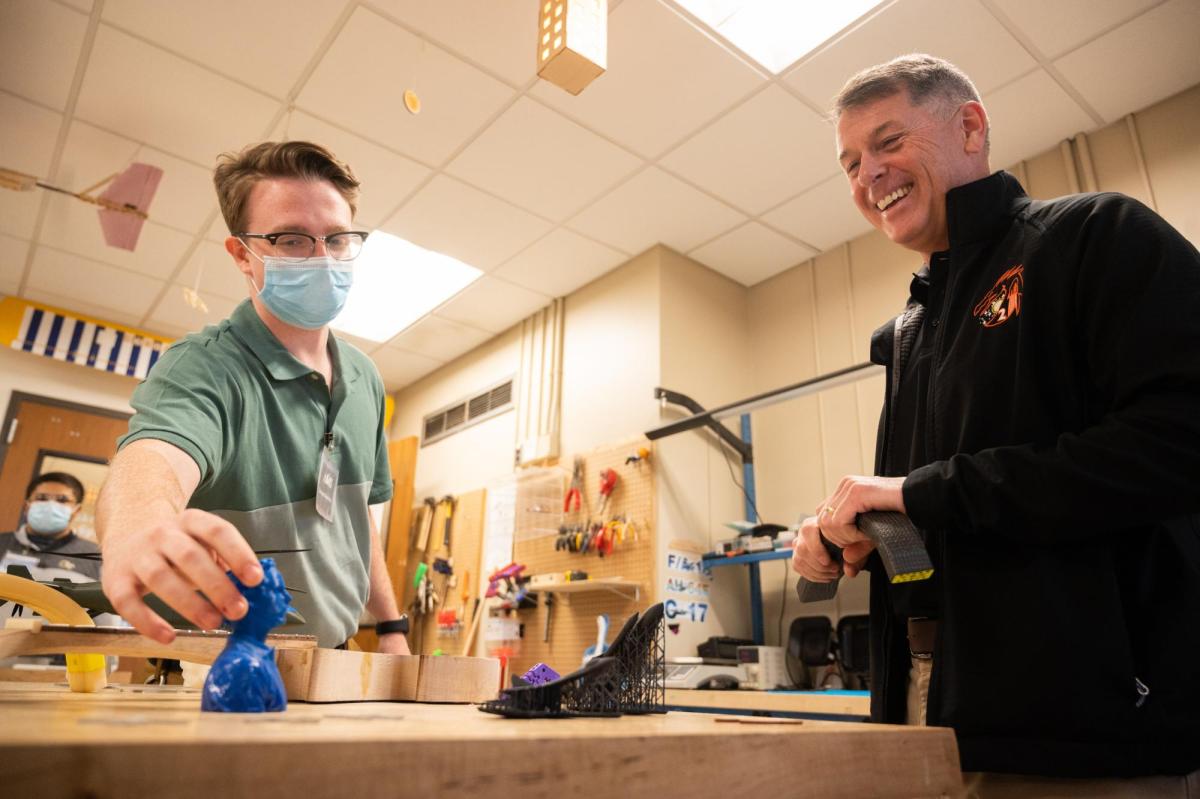
Senior Carson Coursey points out a 3D-printed figurine in the Yang Aero Maker Space.
The morning ended with a visit to the Yang Aero Maker Space. The student-led facility in the Weber Space and Science Technology Building allows students to use 3D printers, laser cutters, and more to build prototypes that advance their research and curiosity.
“It was a really great opportunity to talk to an astronaut, something I’d only done on Zoom,” said Rachel Thomas, a member of the Ramblin’ Rocket Club who is scheduled to graduate this semester with her undergraduate degree in aerospace engineering. “I talked to him about my team, GTXR (Georgia Tech Experimental Rocketry), and he was really excited about that. It was a unique experience.”
(text and background only visible when logged in)
(text and background only visible when logged in)
The day’s main event, a Q&A in the Clough Undergraduate Learning Commons, filled an auditorium. In addition to the 250 or so Yellow Jackets in the room, nearly a thousand K-12 students from around the Atlanta area tuned into the livestream as invited guests, with some submitting questions for Kimbrough.
Topics ranged from the astronaut application process, when he knew he wanted to travel to space (as a young child), and the relevancy of his ISyE degree to his success as an astronaut.
The session was moderated by AE School Ph.D. student Naia Butler-Craig, an aspiring astronaut.
“I’m so grateful that Shane took his time to pour into the next generation of aerospace engineers,” Butler-Craig said. “It was such an honor to hear from someone as accomplished and personable as him. I feel motivated to keep going on my own journey in following his footsteps!”

AE Ph.D. student Naia Butler-Craig interviews Kimbrough at the campus-wide Q&A.
(text and background only visible when logged in)
Before taking a detour and riding in the Ramblin’ Wreck for the first time, Kimbrough stood before another packed house that night. He threw out the first pitch before Georgia Tech beat Georgia 11-7. Kimbrough grew up attending Yellow Jacket sporting events and nearly enrolled as undergraduate. Instead, he attended the U.S. Military Academy and pitched for its baseball team.
“It was an incredible, perfect day for me. Getting to come back and give back a little bit to the students and faculty was amazing,” Kimbrough said. “The weather was great. The events were great. I just want to go back to school!”

The baseball and jersey traveled with Kimbrough for 199 days on the ISS.
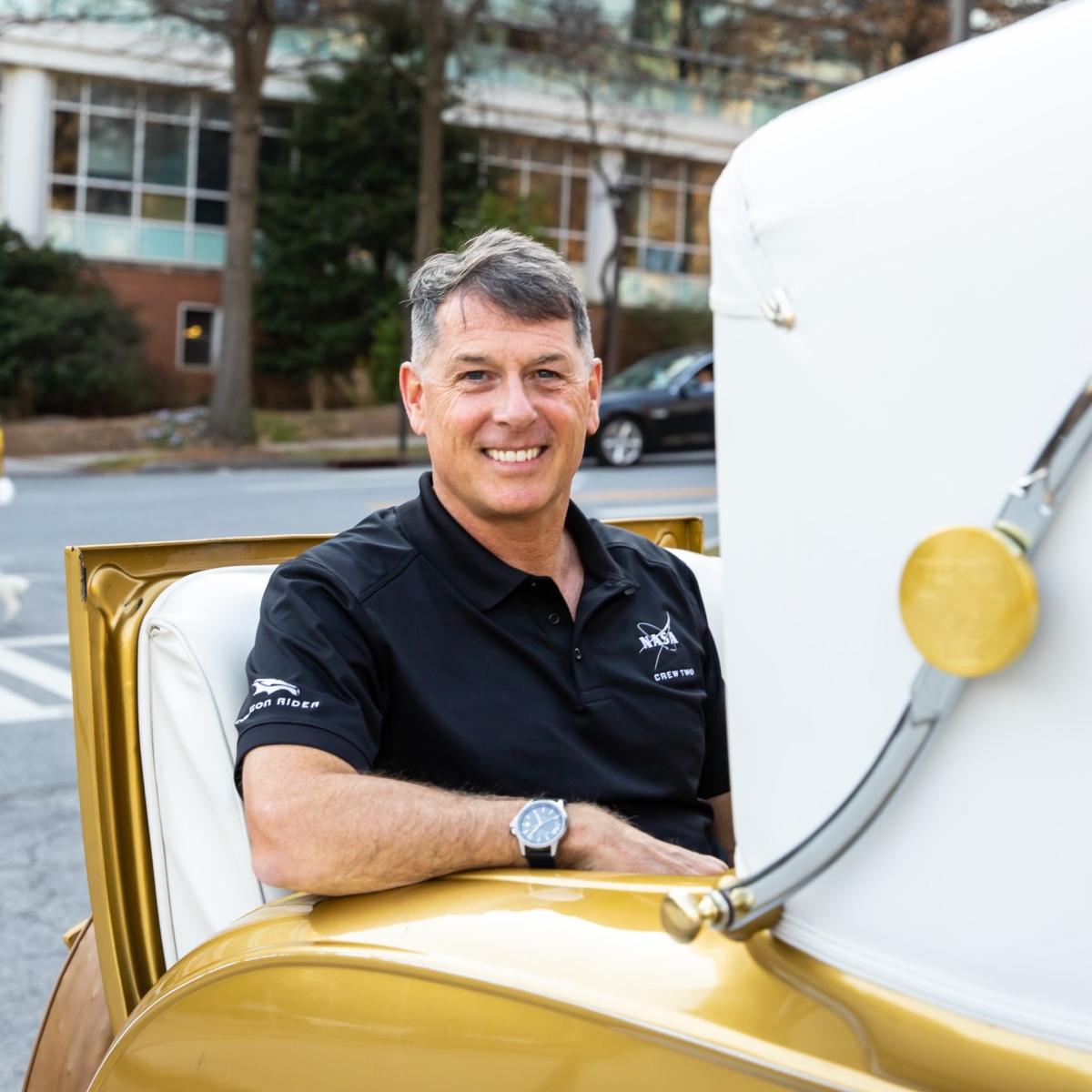
Kimbrough takes a ride in the Ramblin' Wreck.
Q&A Video
Watch the full Q&A session.
(text and background only visible when logged in)
Related Content
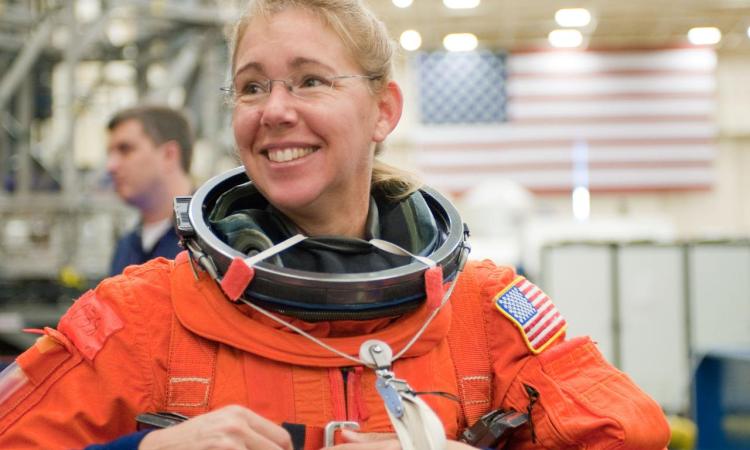
Sandy Magnus Named to U.S. Astronaut Hall of Fame
Georgia Tech graduate and Professor of the Practice Sandra “Sandy” Magnus has been elected to the U.S. Astronaut Hall of Fame. Magnus, who flew to space three times, will be inducted in June at the Kennedy Space Center in Cape Canaveral, Florida. Only 101 astronauts have received the honor.
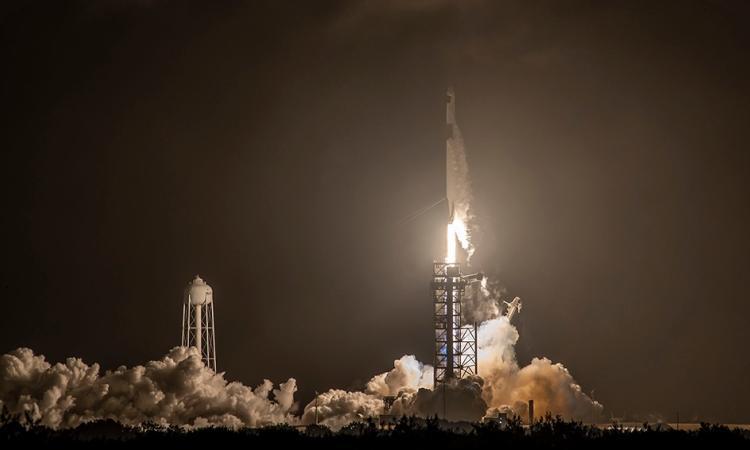
TARGIT and GT-1 Launch Onboard SpaceX’s Commercial Resupply Services (CRS-24) Mission
Two CubeSats created in the Space Systems Design Lab (SSDL) launched on December 21 onboard a SpaceX Falcon 9 rocket from NASA’s Kennedy Space Center in Cocoa Beach, Florida. The launch was part of the SpaceX Commercial Resupply Mission-24 which included - the Tethering And Ranging Mission Of The Georgia Institute Of Technology (TARGIT) and GT-1.
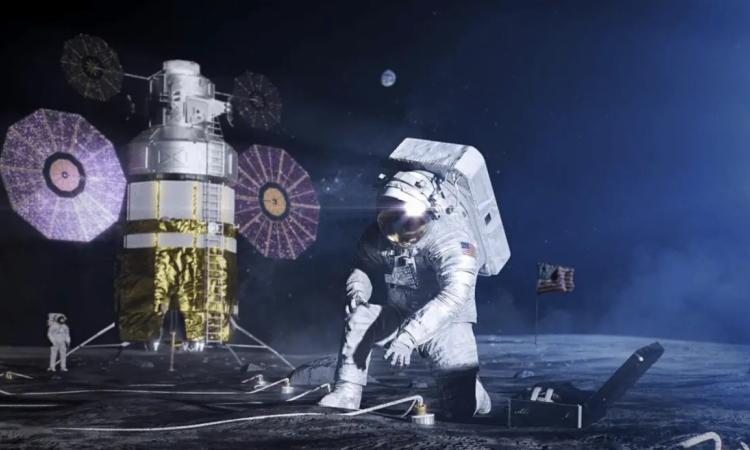
The Future of Space Exploration
Most engineers and scientists agree that this an extremely exciting and busy time to be working in the space industry. Georgia Tech points to what’s next, and how the Institute will contribute.